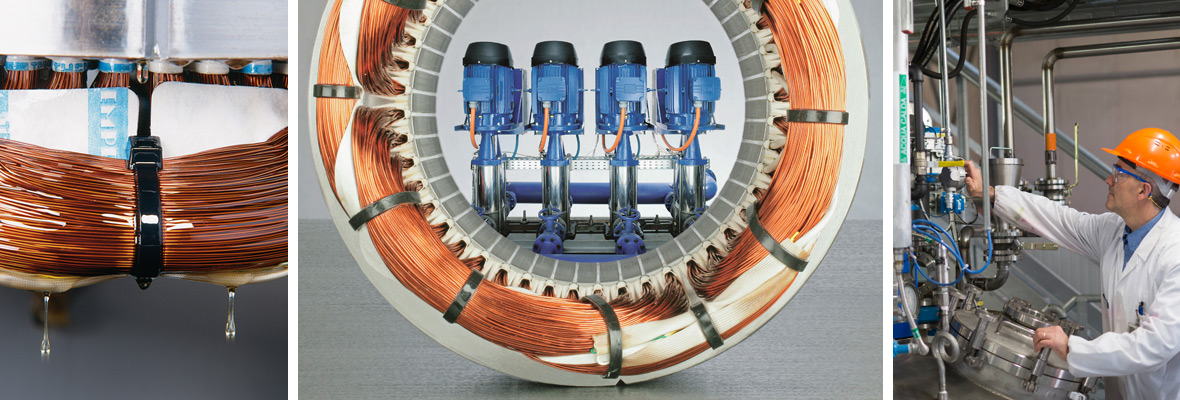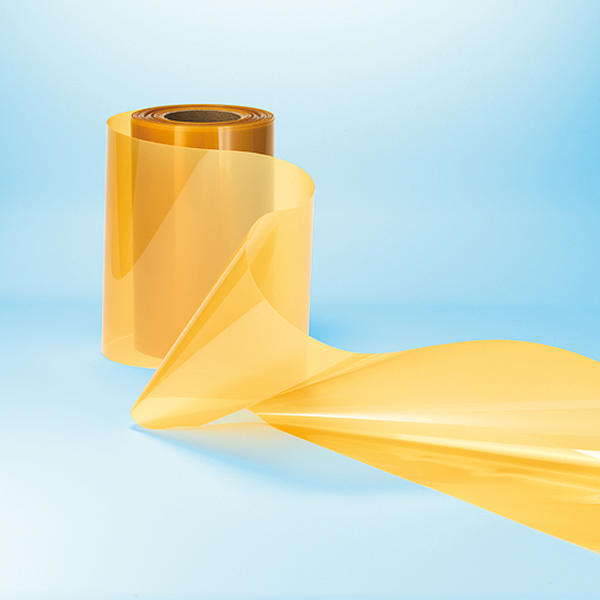Secondary Insulation
The best stability under all operating conditions is achieved by electrical rotary equipment (motors and generators) and static electrical equipment (transformers and sensors) if all the air trapped inside the wire windings is replaced with insulation material. This stage of the value-added chain is known as impregnation or secondary insulation.
This normally thermal impregnating process,
i.e. chemical process under the action of heat, also increases the mechanical stability of the electrical winding and protects the enameled wire during operation from environmental influences such as moisture. This impregnation can entail a trickling of the wire winding, a dip or dip-and-roll process.
Today impregnation is increasingly carried out
by means of the vacuum method in order to completely eliminate any air that might be trapped (VPI process). Trapped air bubbles reduce heat dissipation, since air is a good heat insulator, or they give rise to disruptive electrical charges in high-voltage applications, which can destroy the insulation. In addition, UV light curing might be employed, which creates very highly cross-linked, and thus impermeable, impregnating layers.
The impregnating resin or varnish
(impregnating material generally) consists of organic components (prepolymers) that react to cross-linked polymers during the curing process and thus form a further electrical insulation layer additional to the wire enamel.
The following different impregnating resins exist:
Unsaturated polyester resins (UPs) with styrene or vinyl toluene as a reactive thinner UPs without volatile organic substances (Monomer free so-called MF resins) Epoxy resins Water-based resins Alkyd resins with an organic solvent or water-based.
Where transformers for electrical power transmission are concerned, either impregnating resins (dry transformers) or insulation fluids (wet transformers) are used.


